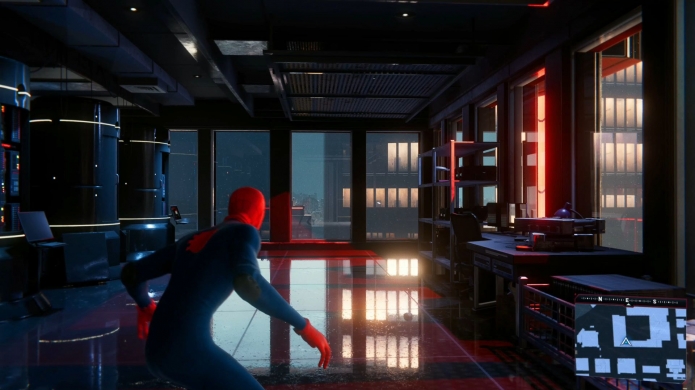Post by KostaAndreadis @ 12:07am 07/11/20 | 0 Comments

Ray-tracing, at its core is the process of using light (measured in rays) bounding around to accurately render or calculate things like shadows, lighting, and even reflections. It's a costly measure -- hence its absence from the PS4 and Xbox One -- but when implemented it brings a sense of realism to scenes that developers would otherwise have to fake.
One of the most immediately noticeable forms of ray-tracing, the use of real-time reflections is present in PlayStation 5 launch-title Spider-Man: Miles Morales. Which adds realistic reflections on quite a few surfaces, including all the windows Miles swings by or walks past -- with ray-tracing you can even see a Spidey reflection as you get close.
To demonstrate the effect -- which is presented as part of the game's visual mode the runs in 4K at 30fps with advanced lighting and other effects far superior to the PS4 original -- this short sequence shows a highly reflective cinematic exterior followed by an interior shot with a reflective floor.
For comparison you can see the same room in Spider-Man: Miles Morales' performance mode -- which targets a smooth 60fps but turns off high-end effects like ray-tracing -- and see the difference beteen screens-space reflections, cube maps, and other techniques developers have been using for years to present reflections in games.
Ray-tracing isn't the only next-gen bit of visual detail to be found in Miles Morales as the more powerful PS5 hardware also leads to greater draw-distances, crisper textures, improved lighting, and even better depth of field effects to make it all look even more cinematic.
Spider-Man: Miles Morales is a PlayStation 5 launch title -- stay tuned for our full review.
Latest Comments


















